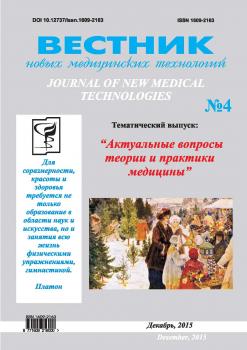The purpose of this study was to determine the optimal synthetic material for prosthetic hiatal hernia. Materials and methods. Experimental study was carried out in 24 adult rabbits of different sexes. In the ex-periment prosthetic hernioplasty hiatal hernia was simulated. The animals were divided into two groups: 12 hernioplasty with implantation of a monofilament macroporous lightweight composite prosthesis (50% polypropylene, 50% monocryl) and 12 hernioplasty with implantation of a microporous prosthesis from polytetrafluoroethylene PTFE. Comparative analysis of reparative processes in the implantation of endoprosthesis was carried out in the 7th, 30th, 90th and 180th postoperative day. Results. Intra-operative complications in the groups didn’t registered. In the postoperative period after implanta-tion of the composite prosthesis in all periods, the complication wasn’t identified. There are the complications in 3 cases (25%) of the use of PTFE prosthesis in the late postoperative. One patient was found to displacement of the implant on 90th day of the experiment, and 2 observations - cigar-shaped deformation of the prosthesis on the 90th and 180th days of the postoperative period. Feature of the morphological picture in the implantation of the prosthesis PTFE was a large amount of thick convoluted collagen fibers, not germinating implant. The implant is made of composite material, was surrounded by a thin, soft fiber, uniform layer of mature connective tissue with an orderly arrangement of collagen fibers sprouting prosthesis. Conclusion. It was established that the most suitable implant for plastic hiatal hernia is a composite prosthesis as firmly fixed to the diaphragm germinating its connective tissue and has no tendency to shift. The implantation of PTFE prosthesis has a more favorable course of the wound process, however, the implant doesn´t invade connective tissue and is encapsulated with the formation of rough scar.
hiatal hernia, prosthetic hernioplasty
1. Burikov M.A., Shul´gin O. V. Osobennosti lecheniya gastroezofageal´noy reflyuksnoy bolezni u pozhilykh patsientov. Uspekhi gerontologii. 2013. T. 26. № 1. S. 172-175.
2. Laparoskopicheskaya korrektsiya gryzh pishchevodnogo otverstiya i reflyuks-ezofagita / Galimov O.V. [i dr.]. Endoskopicheskaya khirurgiya. 2006. № 6. S. 14-19.
3. Ispol´zovanie laparoskopicheskogo metoda v lechenii patsientov s gryzhami pishchevodnogo otverstiya diafragmy v usloviyakh munitsipal´noy bol´nitsy / Ivanyugin V.A., Kudryavtsev P.V., Kim P.P. [i dr.] . Infektsionnye zabolevaniya kak prichina ushchemleniya gryzh bryushnoy stenki: tezisy mezhdunarodnoy konferentsii (27-28 oktyabrya 2011 goda). URL: http://www.docivanov.ru/?mdlname=text-page&;page NamePart= tezisherniamoscow (data obrashcheniya 28.08.2014).
4. Ospanov O.B., Shpis P.V., Kozhakhmetov S.K. Rezul´taty primeneniya laparoskopicheskikh fundoplikatsiy razlichnogo tipa. Endoskopicheskaya khirurgiya. 2009. № 1. S. 186-187.
5. Puchkov K.V., Filimonov V.B. Gryzhi pishche-vodnogo otverstiya diafragmy. M.: Medpraktika, 2003. 172 s.
6. Blizhayshie i otdalennye endoskopicheskie rezul´taty khirurgicheskogo lecheniya GERB i GPOD / Starodubtsev V.A. [i dr.]. Al´manakh instituta khirurgii im. A.V. Vishnevskogo. 2012. T. 7. № 1. S. 125-126.
7. Khitar´yan A.G., Miziev I.A., Kovalev S.A. Diafragmokruroplastika s ispol´zovaniem setchatykh eksplantatov pri maloinvazivnom khirurgicheskom lechenii gryzh pishchevodnogo otverstiya diafragmy. Al´manakh instituta khirurgii im. A.V. Vishnevskogo. 2012. T. 7. № 1. S. 123-124.
8. Chernousov A.F., Bogopol´skiy P.M., Kurbanov F.S. Khirurgiya pishchevoda: Rukovodstvo dlya vrachey. M.: Meditsina, 2000. 352 s.





